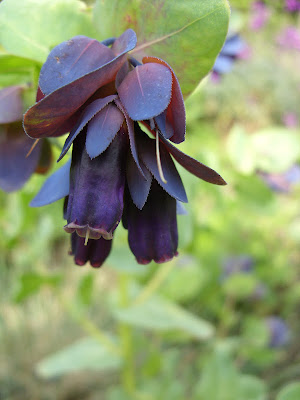This garden is an artist's paradise. Both owners are artists as well as gardeners, and all around the garden are the products of their creativity. Starting with their mini Stone Henge.....
This homemade gazebo has mirrored tiles stuck to the ceiling:
Here are some more examples of the owners' artistic flair...
The garden has a rather wild, rugged feel to it, which I admire but would not find easy to adopt.
 |
| I loved this flight of steps flanked by bamboo. |
At the garden entrance is a well stocked nursery with some unusual plants for sale. This garden made a welcome change from the Camellia / Rhododendron-heavy gardens which dominate in Cornwall.




















































